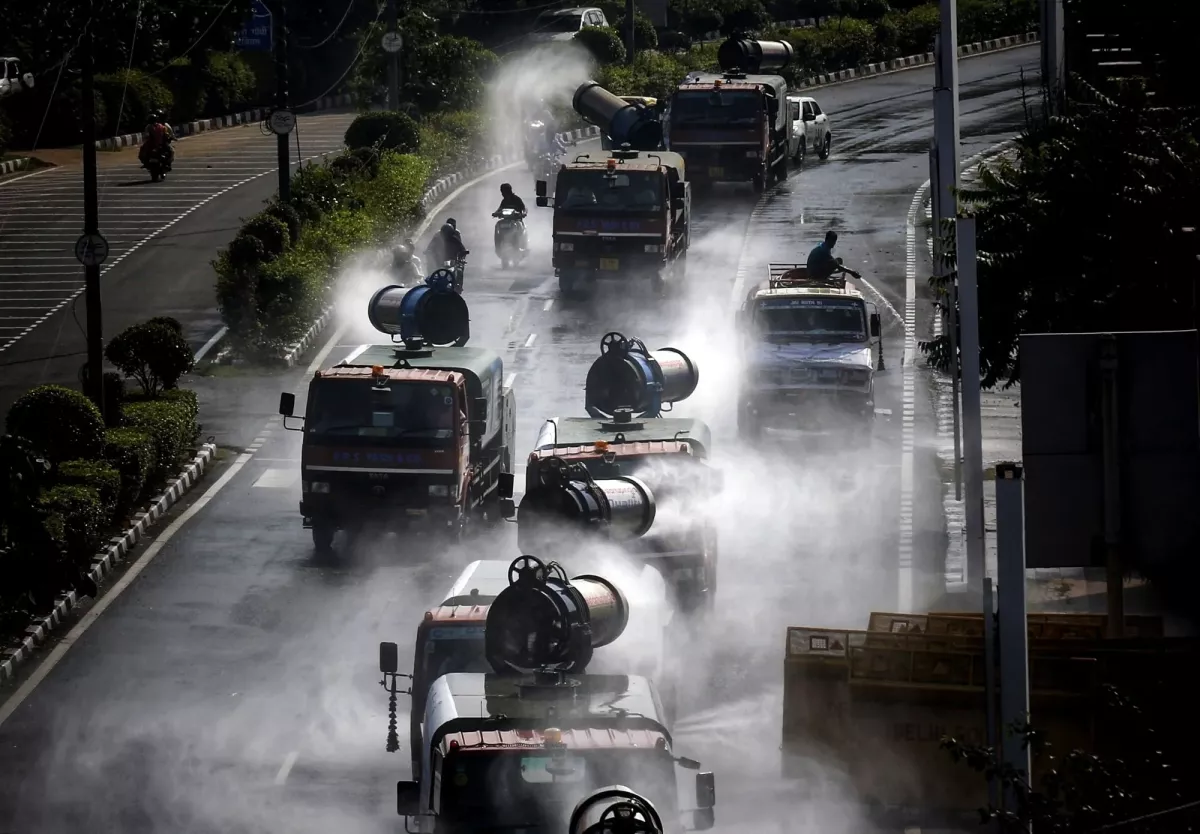Why India is damned to suffer every winter from soaring air pollution
Thick smog blanketed India’s capital this week, shortly after millions celebrated the Hindu festival of Diwali with fireworks that sent pollution levels soaring to hazardous levels. Revelers in New Delhi burst firecrackers late into the night, filling the air with dense smoke and fine particulate matter that combined with seasonal pollutants and stagnant weather.
By the last day of the festivities on October 21, the city’s Air Quality Index (AQI) had surged above 350 in several neighbourhoods, as reported by AP. This level is considered as “severe” and dangerous to breathe, according to the World Health Organization’s recommended limits. Visibility also fell sharply in some parts of the city as a grey haze swallowed streets, high-rises, and monuments.
India’s Supreme Court had eased a blanket ban on firecrackers ahead of Diwali, allowing the use of so-called “green firecrackers,” designed to emit about 30% fewer pollutants. These firecrackers were to be used only during specific hours of the four-day festival. However, as in previous years, the rule was widely flouted, with residents setting off traditional fireworks well into the night.
The city’s toxic air, however, cannot be attributed to a single cause. Instead, it results from a combination of Diwali firecrackers, vehicular emissions, and the burning of crop residue in the neighbouring agrarian states of Punjab, Haryana, and Uttar Pradesh. Each year, these factors converge with the onset of winter, when lower temperatures and stagnant winds trap pollutants close to the ground, creating hazardous air quality across the region.
New Delhi, along with its sprawling metropolitan area of over 30 million residents, consistently ranks among the world’s most polluted cities in winter. The pollution typically worsens when Diwali fireworks coincide with smoke from burning crop stubble and meteorological conditions that inhibit the dispersal of pollutants.
Indian media, citing a climate research firm, reported that incidents of stubble burning had fallen by 77% this year due to floods that destroyed crops across much of northern India. According to this analysis, firecrackers were the main contributor to Delhi’s toxic air following Diwali.
However, data cited in a BBC article from Punjab’s Pollution Control Board paints a different picture. The state recorded a sharp rise in crop-burning incidents in the ten days leading up to the festival — with more than 350 cases, compared to just 116 reported by October 11.
Over the past few years, authorities have launched awareness campaigns and introduced schemes to promote alternative methods for clearing fields, such as using specialized machinery. These measures have had some success — Punjab reported 10,909 farm fires last year, a steep drop from 36,663 the previous year. Yet the practice persists largely because burning remains the cheapest and fastest way for farmers to prepare their fields for the next crop cycle.

In response to the worsening smog, New Delhi authorities have implemented emergency measures to reduce pollution. These include halting most construction activities, restricting the use of diesel generators, and encouraging residents to stay indoors. City authorities are also deploying measures such as the deployment of anti-smog guns and water sprinkler machines to temporarily help with the pollution in the air.
Despite these short-term interventions, environmentalists warn that the capital’s annual air crisis will continue unless deeper structural changes are made — including transitioning to cleaner energy sources, enforcing stricter vehicle-emission standards, and addressing the economic factors that perpetuate stubble burning.
By Nazrin Sadigova








